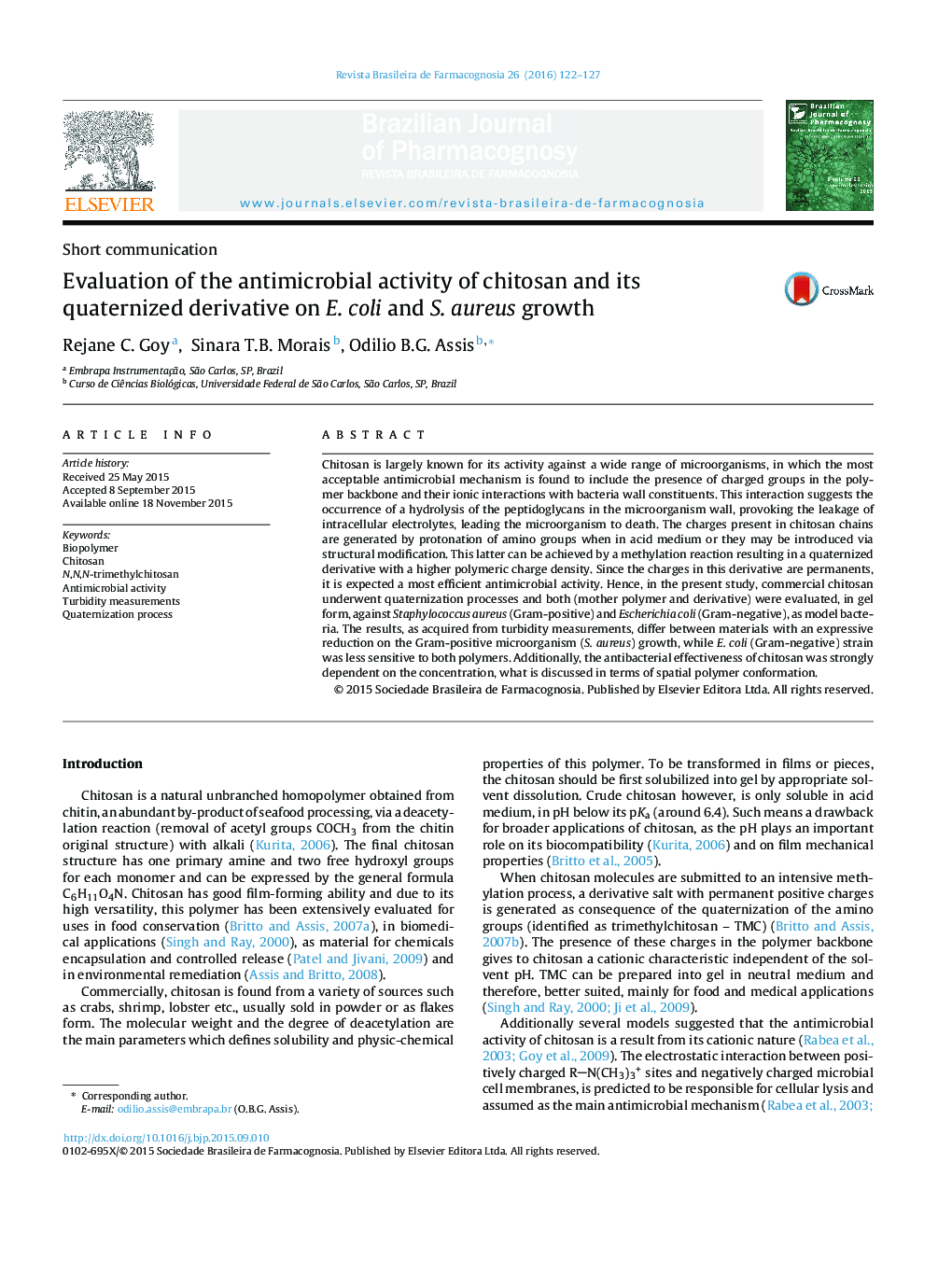| کد مقاله | کد نشریه | سال انتشار | مقاله انگلیسی | نسخه تمام متن |
|---|---|---|---|---|
| 2577547 | 1129949 | 2016 | 6 صفحه PDF | دانلود رایگان |
Chitosan is largely known for its activity against a wide range of microorganisms, in which the most acceptable antimicrobial mechanism is found to include the presence of charged groups in the polymer backbone and their ionic interactions with bacteria wall constituents. This interaction suggests the occurrence of a hydrolysis of the peptidoglycans in the microorganism wall, provoking the leakage of intracellular electrolytes, leading the microorganism to death. The charges present in chitosan chains are generated by protonation of amino groups when in acid medium or they may be introduced via structural modification. This latter can be achieved by a methylation reaction resulting in a quaternized derivative with a higher polymeric charge density. Since the charges in this derivative are permanents, it is expected a most efficient antimicrobial activity. Hence, in the present study, commercial chitosan underwent quaternization processes and both (mother polymer and derivative) were evaluated, in gel form, against Staphylococcus aureus (Gram-positive) and Escherichia coli (Gram-negative), as model bacteria. The results, as acquired from turbidity measurements, differ between materials with an expressive reduction on the Gram-positive microorganism (S. aureus) growth, while E. coli (Gram-negative) strain was less sensitive to both polymers. Additionally, the antibacterial effectiveness of chitosan was strongly dependent on the concentration, what is discussed in terms of spatial polymer conformation.
Absorbance, as measured at 620 nm, as a function of chitosan and TMC concentration added in the medium with E. coli, according to turbidity method after 12 h interaction.Figure optionsDownload as PowerPoint slide
Journal: Revista Brasileira de Farmacognosia - Volume 26, Issue 1, January–February 2016, Pages 122–127
